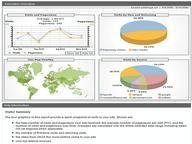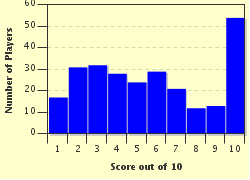Quiz Answer Key and Fun Facts
1. Suppose E and F are mutually exclusive events in a sample space S with probabilities .4 and .3 respectively. What is the probability of their union?
2. Suppose E is an event in a sample space S with probability .3. What is the probability of the complement of E?
3. Suppose E and F are events in a sample space S. Suppose further that E has probability .2, F has probability .6, and the intersection of E and F has probability .1. What is the probability of the union of E and F?
4. Suppose E and F are independent events in a sample space S. Suppose further that E has probability .3 and F has probability .4. What is the probability of the intersection of E and F?
5. Suppose E and F are independent events in a sample space S. Suppose further that E has probability .3 and F has probability .4. What is the probability of the union of E and F?
6. Suppose E and F are mutually exclusive events in a sample space S. Suppose further that E has probability .3 and F has probability .4. What is the probability of the intersection of E and F?
7. Suppose E and F are events in a sample space S. Suppose further that E has probability .3, F has probability .4, and the intersection of E and F has probability .2. Find the probability of the intersection of E and (the complement of F).
8. Suppose E and F are events in a sample space S. Suppose further that E has probability .5, F has probability .6, and the intersection of E and F has probability .2. Find the probability of the union of E and (the complement of F).
9. Suppose E and F are events in a sample space S. Suppose further that E has probability .8 and F has probability .9. What is the largest possible value for the probability of the intersection of E and F?
10. Suppose E and F are events in a sample space S. Suppose further that E has probability .8 and F has probability .9. What is the smallest possible value for the probability of the intersection of E and F?
Source: Author
rodney_indy
This quiz was reviewed by FunTrivia editor
crisw before going online.
Any errors found in FunTrivia content are routinely corrected through our feedback system.


